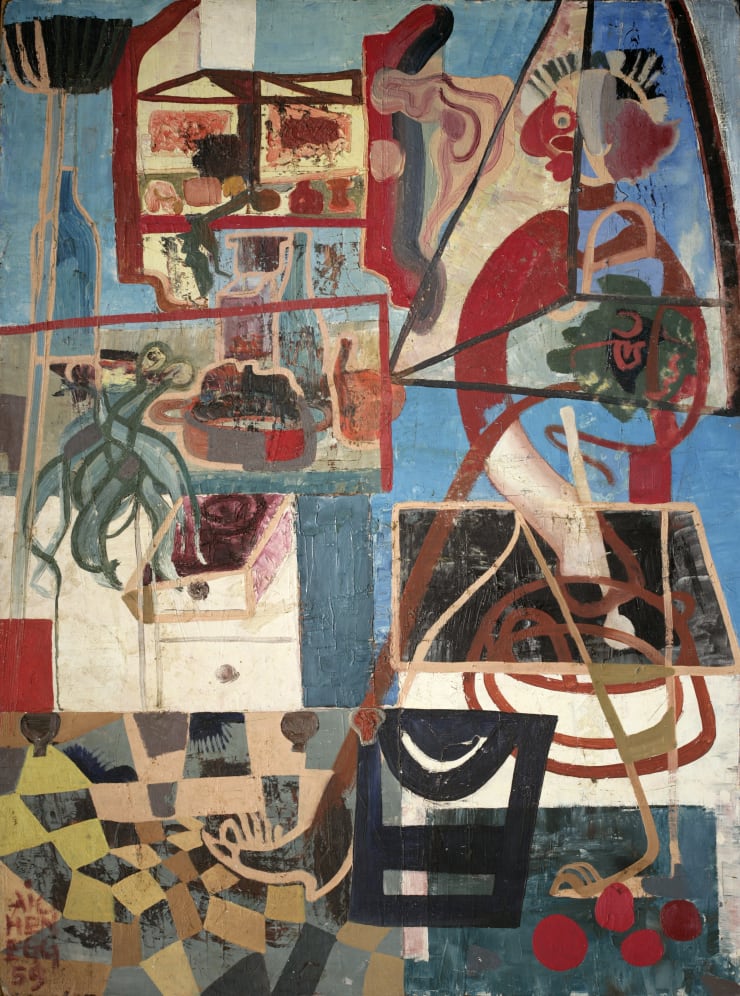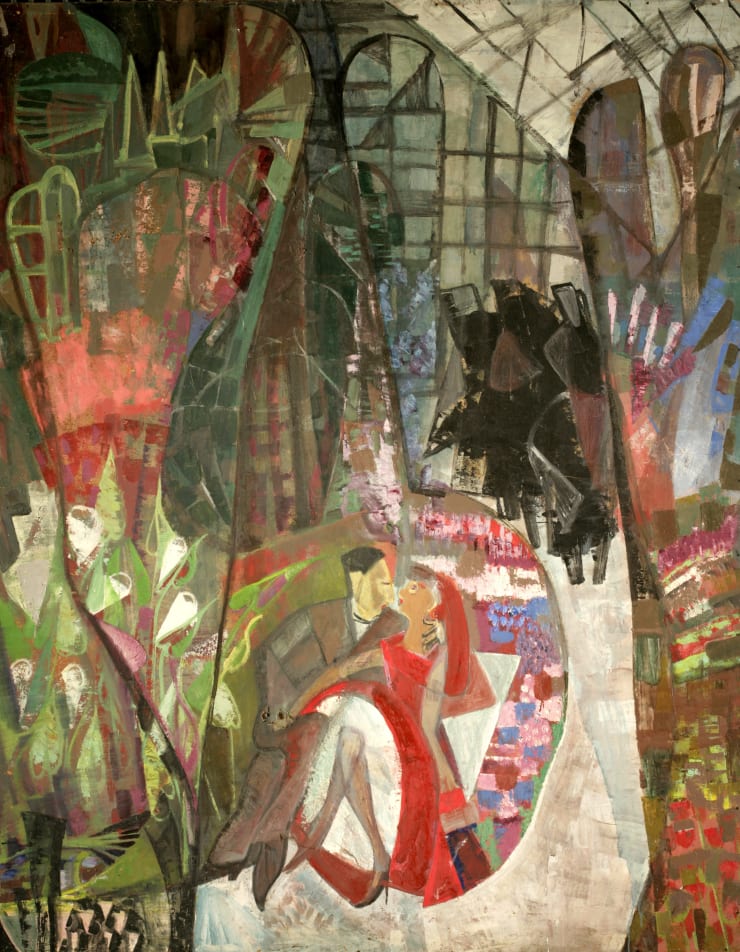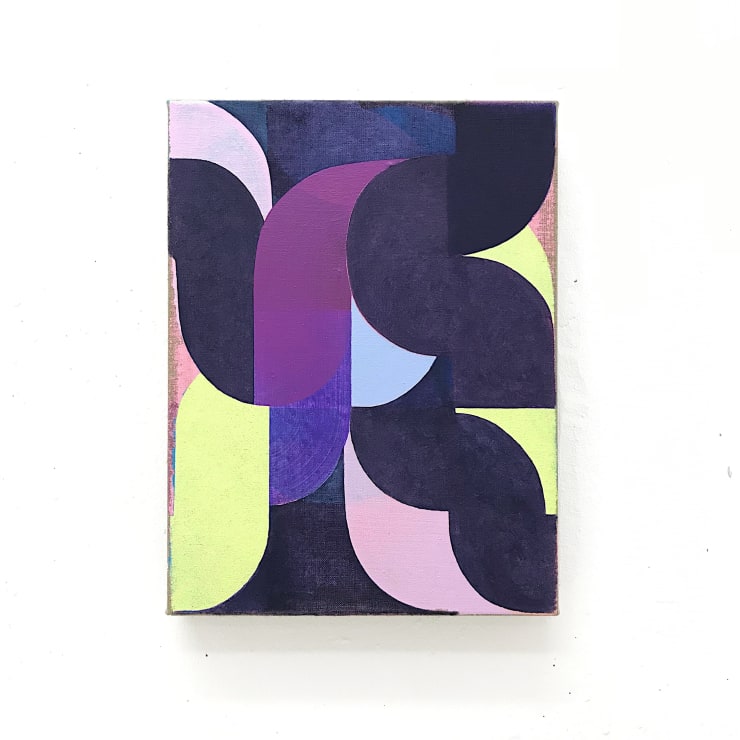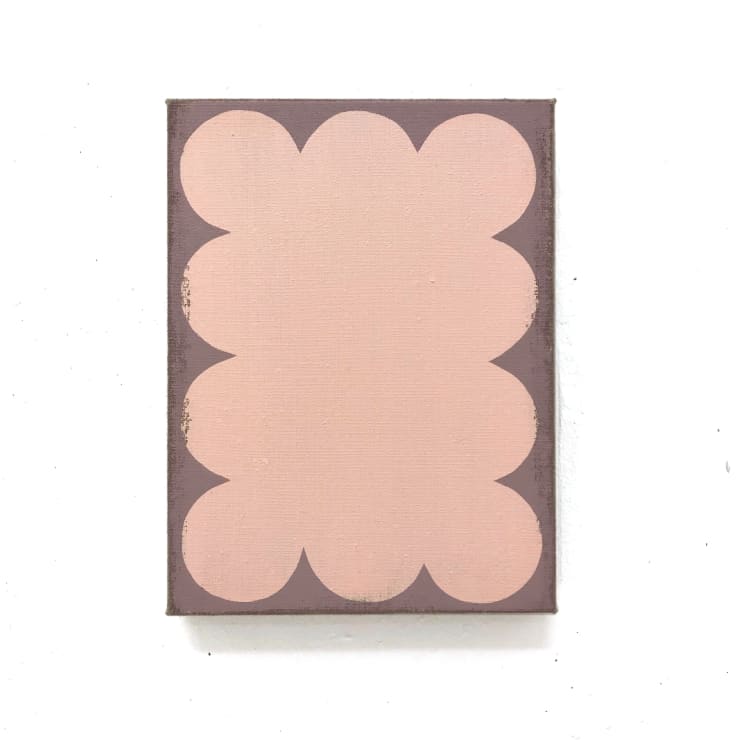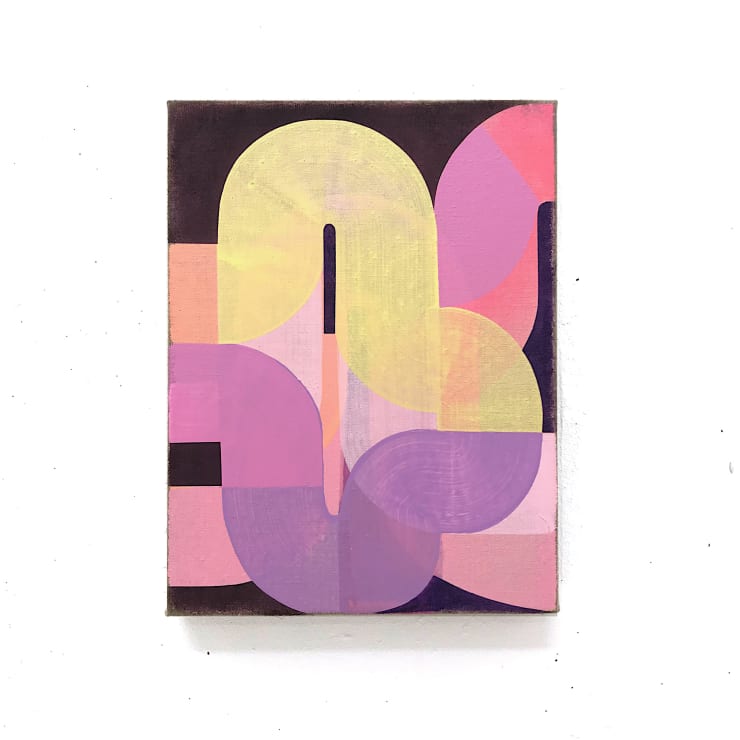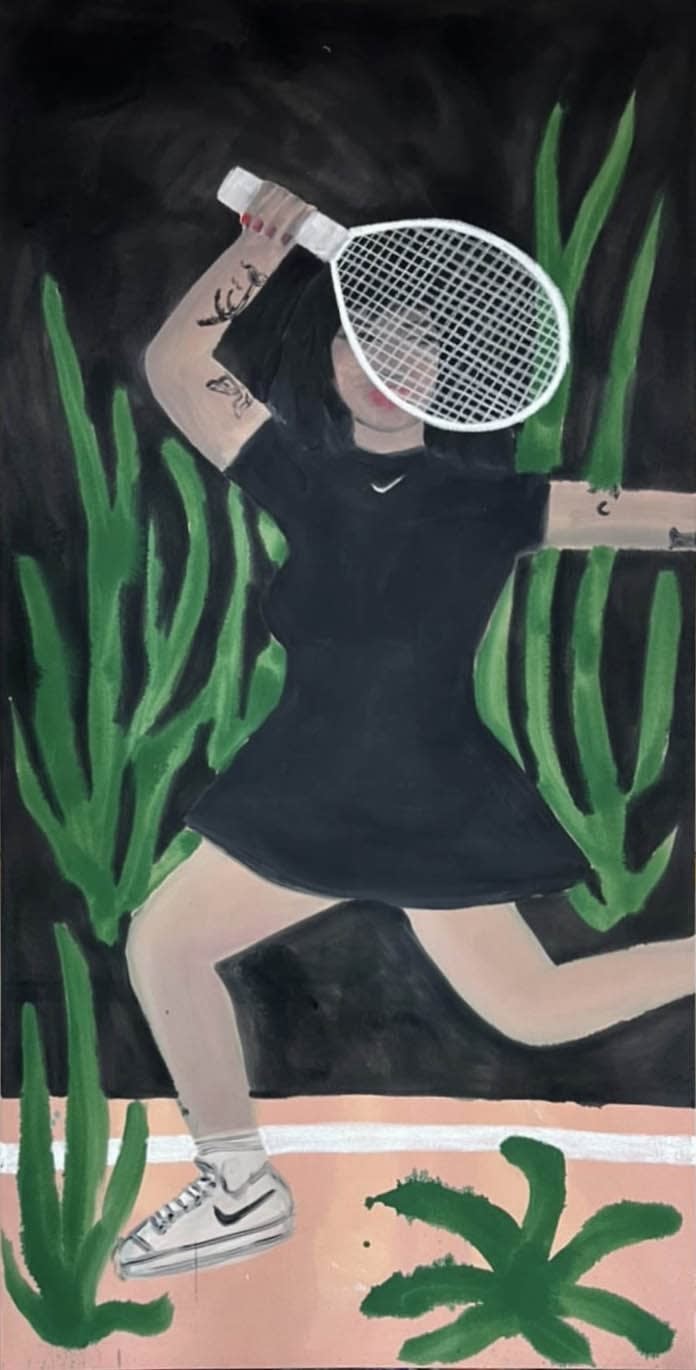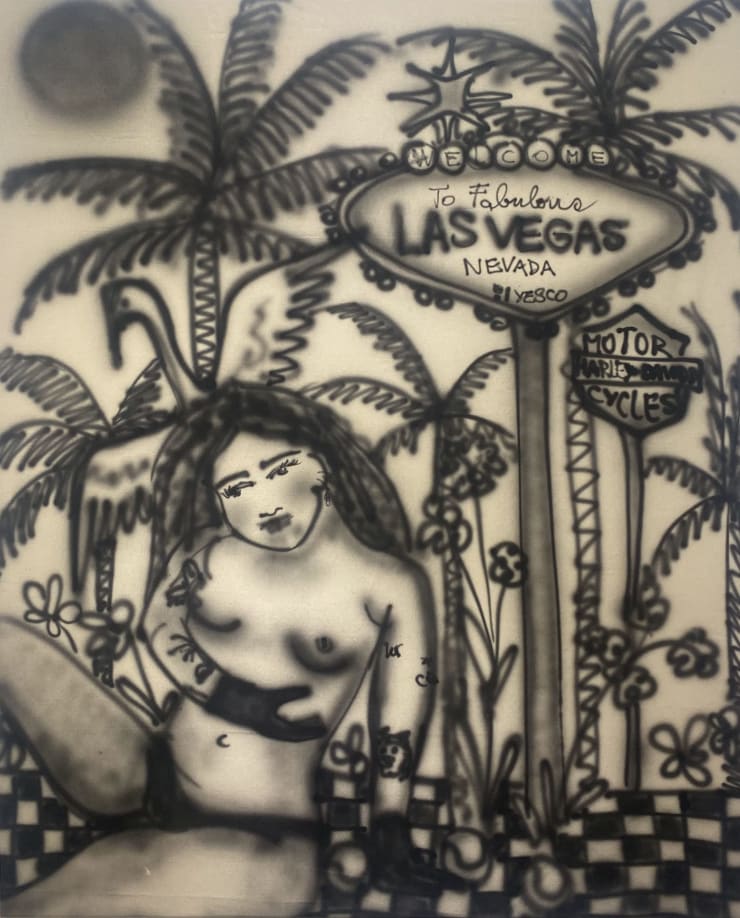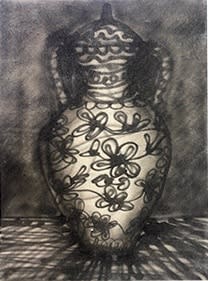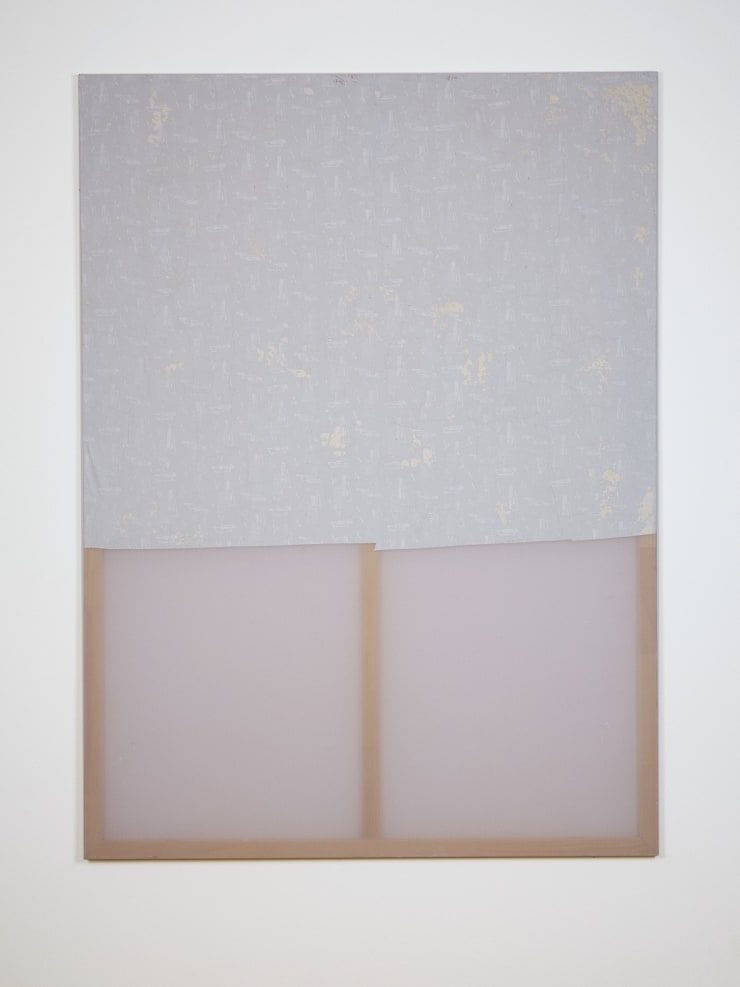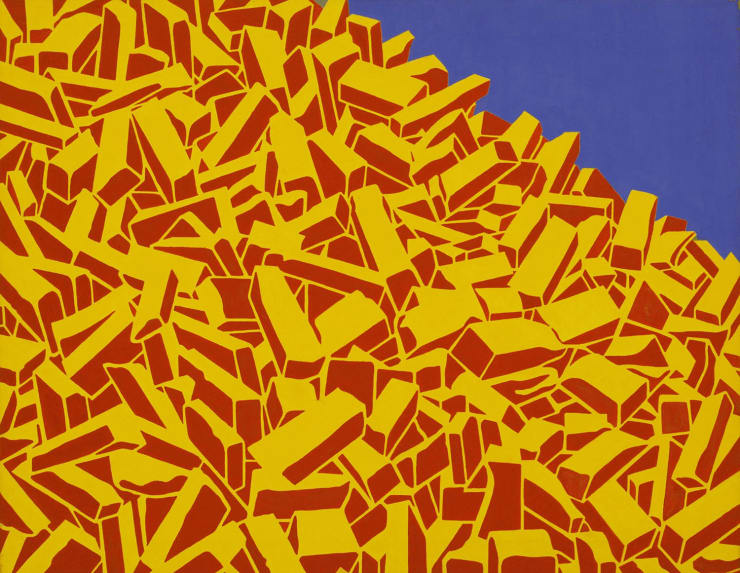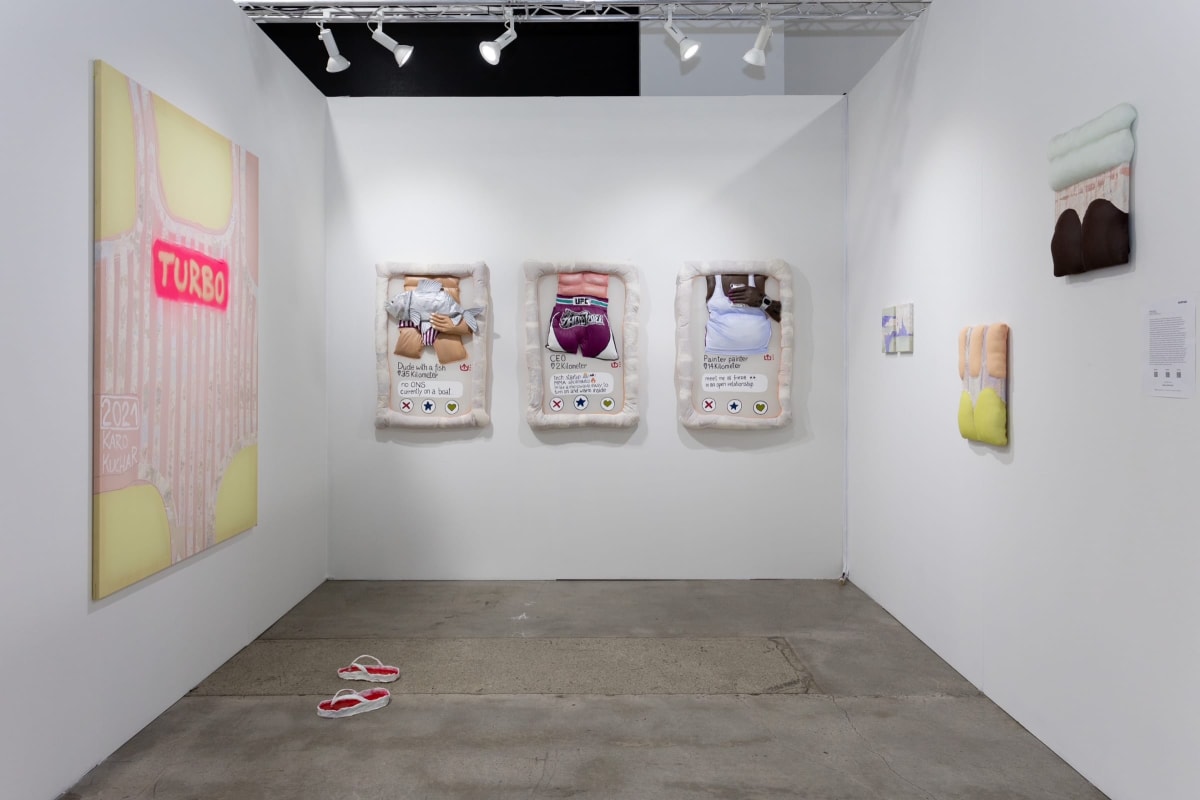SIX SOLOS: Group Exhibition
The current exhibition at Suppan Gallery combines the works of the Austrian Grandes Dames Hermine Aichenegg, Hildegard Joos and Florentina Pakosta with the positions of contemporary artists Laura Limbourg, Julia Brennacher and Karo Kuchar, who were born in the 1980s and 1990s. The connecting link is their preoccupation with the medium of painting - as an exploration of painterly possibilities or modes of action - partly as an association with the modernist project and its abstract to gestural language of form, partly in the floating between formal, painterly and narrative possibilities, partly due to the inclusion of other materials or the spatial context - as a constant updating of the medium.
Like Florentina Pakosta, also Limbourg and Kuchar are interested in socio-political issues. However, while Pakosta's socio-critical works deal with male roles and power structures in the tradition of feminism, Laura Limbourg and Karo Kuchar deal with the subject in a much more unbiased manner, both in terms of form and content. In works such as “Britta en Bretagne” (2021), Karo Kuchar refers back to the term “female art”, which she vehemently rejects, and shows gigantic bikinis that were introduced in the 1950s and represented a scandal, but for Kuchar the final frontier to the world – clothing and architecture (in the form of plaster, which she transfers from the desolate walls of old buildings or construction sites to her translucent and fragile image carriers using binding agents) as the last layer that is supposed to offer protection by separating us from the outside space. At the same time, individual narrative layers are stacked as a kind of layering. Time, as the momentary and intangible, is condensed layer by layer, individual moments into a single image.
By Laura Limbourg, who became known for her symbolic portraits of girls rescued from prostitution in Cambodia, rendered in a naïve style and in the midst of exotic jungle environments, Suppan is showing a large-format recent work by the artist in his current exhibition, in which Limbourg exclusively personal reflects impressions of her stay in LA by portraying people who have influenced her – or herself (“Las Vegas”, 2022) in the sense of diary works, while her social commitment is shifting to the private sphere, at least for the moment.
And just as Pakosta, starting in 1989 of all things, a year of significant political and economic upheavals, broke away from representationalism and created geometric abstractions with her "Tricolor Pictures" - as symbols for the upheaval - the works of the two younger artists also elude direct interpretation, too if they repeatedly take their starting point in socially critical questions.
Like Hildegard Joos, whose works (like those of Hermine Aichenegg) show an independent processing of the tendencies of international modernism, Julia Brennacher also repeats her motifs and formal concerns in series and still conveys new messages again and again due to countless possible variations. In doing so, Brennacher's transparent application of paint often leads to comprehensible overlays by means of layers of paint. Oscillating between classic materials and unconventional colors inspired by fashion and design, between geometric and organic forms and between painting and sculpture (Brennacher attests that her works already have a physical component by protruding into space.), she questions the medium and its diverse forms and techniques in a humorous and intuitive way.
Mag. Birgit Laback











